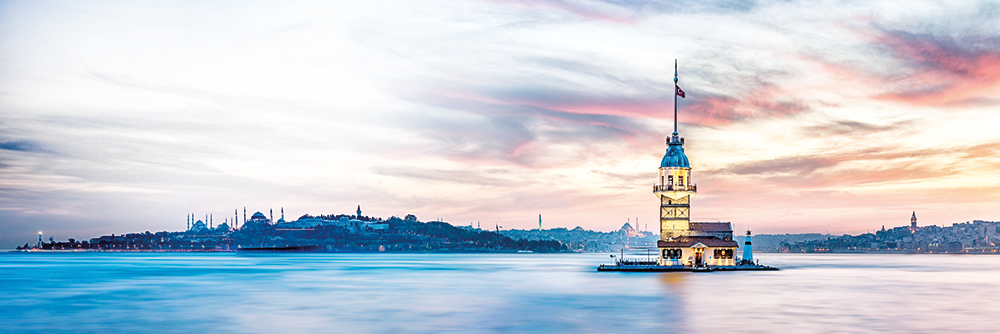
Istanbul is under the influence of the Marmara climate, which is known as the transition climate between the Mediterranean and Black Sea climates. While the summers are hot and dry on the Marmara coast in the south and the winters are mild, the summers are warmer and rainy on the Black Sea coast and the winters are cool.
How to Spend Your Free Time in Istanbul
With its green spaces, historical places and beaches, Istanbul offers many free time activities. In this section, you can find many options to have a good time and spend your time in Istanbul most effectively.
Taksim Square The name of the district of Taksim and the square originates from the time when water sellers would distribute (taksim) water to the public during the Ottoman era. Before it was turned into a square, the neighbourhood, which was a narrow area where the old houses were lined, was expanded and, in time, took its present form. The Monument of Republic situated in the middle of the square and its surroundings are used for ceremonies today and assume the function of a meeting place. The nostalgic tram runs from the beginning of the square to the historical tunnel.
Sultanahmet Square One of the Istanbul’s oldest and most famous landmarks, the Sultanahmet Square attracts millions of people all over the world throughout the year. The square, also known as Hippodrome, is home to many historical buildings and artefacts such as Hagia Sofia, the Blue Mosque, Basilica Cistern, the German Fountain and the Obelisk of Theodosius. You can take a walk around this square and bare witness to history.
Sultanahmet Mosque The mosque which is also known as the Blue Mosque because of the blue tiles surrounding the walls of interior design was built between 1609 and 1616 during the rule of Ahmed I. It was designed as an imperial show of strength to complement the imposing Hagia Sophia, which faces it across the Sultanahmet Square. In addition to still being used as a mosque, the Sultanahmet Mosque has also become a popular tourist attraction in Istanbul.
Hagia Sophia Often referred to as the eighth wonder of the World, the Hagia Sophia (Ayasofya in Turkish) located in the Sultanahmet Square is one of Istanbul’s most impressive sights. It was built in the 6th century CE (532–537) under the direction of the Byzantine emperor Justinian I. Following the capture of Constantinople by the Ottoman Turks in 1453, and the subsequent pillaging that ensued, Mehmet the Conqueror declared the Hagia Sophia a mosque. Hagia Sophia is now a museum that welcomes history enthusiasts all over the world.
St. Antuan Church Originally called Sant’Antonio di Padova, the Saint Antoine church on bustling Istiklal Caddesi is the largest Roman Catholic Church in Istanbul. It was built to serve the Italian community living in Istanbul in 1725.
Dolmabahçe Palace Dolmabahçe Palace, one of the most fascinating buildings in Istanbul, sits on the most beautiful section of the Bosporus. Dolmabahçe Palace was commissioned by Abdülmecid I, and its construction took place between 1842 – 1853. The palace was used by Abdülmecid I for both living in and for formal occasions. Built by the Armenian architects Garabet Amira Balyan and his son Nigogos Balyan, the palace exhibits a combination of European architectural styles. Dolmabahçe Palace became a museum-palace in 1984. Hundreds of thousands of local and foreign tourists visit this magnificent palace every year.
Basilica Cistern Known locally as Yerebatan Sarayi (meaning Sunken Palace) or Yerebatan Sarnici (Sunken Cistern), Basilica Cistern was the major water reservoir of Constantinople. This subterranean structure was commissioned by Emperor Justinian and built in 532. The largest surviving Byzantine cistern in İstanbul, it was constructed using 336 columns, many of which were salvaged from ruined temples and feature fine carved capitals. The cistern is now open to public auıByzantine times, which means “little castle”.
Galata Tower It is believed that the name of the tower, which the Byzantines called Megalos Pyrgos (Great Horoscope), and the Genoese called Christtea Turris (Christ Tower), is derived from the Greek word “gala” which means “milk”. It is also thought that its name is of Thracian origin or Italian.

